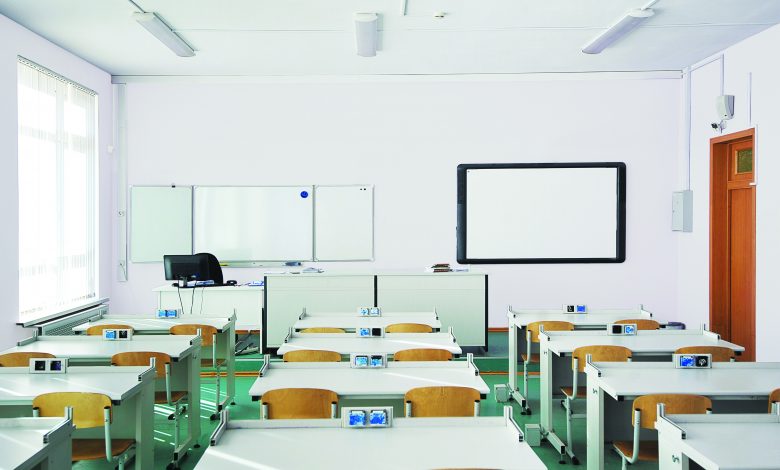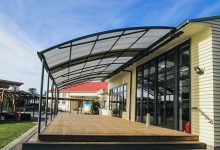
This is a feature article from our Term 3 issue of School News. Check out the full edition online now (or pick up your staffroom copy!).
Funds are available for school improvement projects, especially targeting energy efficiency, and the hoped-for knock-on effect is to support jobs for local tradespeople. In May, a $160 million injection was announced by Education Minister Chris Hipkins. He said: “Classrooms at almost 600 small or remote state schools will be tested to assess lighting quality, noise levels and temperature. All schools that need improvements such as LED lights, acoustic panelling and ceiling insulation will receive them, with work starting later this year.”
In addition, the Sustainability Contestable Fund is set to support energy saving and sustainable projects at schools around New Zealand. A $400 million School Investment Package was also announced back in December for projects at 149 schools. These are expected to get off the ground soon.
Despite global economic anxiety in the shadow of COVID, the pandemic has really highlighted how important education and physical schooling truly is… Teachers, parents, employers, and the government all witnessed up-close this year, what happens when the school environment is stripped away or found to be inadequate. Nationwide distance learning was not only stressful and overwhelming for everybody, but it also highlighted serious inequities in terms of accessibility. Parents struggled to go back to work, or work from home, while schools were closed, and the digital divide was more visible than ever between high-income and low-income families.
It turns out that a well-designed learning space is not just necessary for students, or part of our cultural schooling tradition, but is essential to the way in which our society functions. Keeping students engaged and motivated is the natural domain of the modern classroom and now that we have warmly welcomed our learners back to school, how can we improve the functionality and ambiance of their school environments?
One classic, easy way to do this it to assess and improve classroom lighting. School News caught up with an industry leader in LED lighting for schools to find out about new design options and energy efficiency boosts.
Industry Opinion: Q&A, with Justine Hickie, managing director of Eurotech Lighting.
- What makes lighting energy efficient?
- Light emitting diode (LED) technology is currently the most energy efficient lighting solution on the market. This technology has a smaller power consumption to light output ratio compared to other lighting technologies, so there is significantly reduced power consumption. It can also function using timers and sensors that ensure it only uses power when needed: daylight (lux) and motion sensors are available to match the sensor functionality requirements of particular spaces within schools.
- How is LED lighting best used in schools?
- Effective lighting designs for any space including schools should capitalise on the natural light that is available and be complimented with artificial light where required. Lighting levels that leverage natural light have shown to benefit the health of pupils and make them more productive and attentive, emphasising the importance of getting a ‘fit for purpose’ lighting design produced up front.
LED technology is available in all types of lighting fixtures from downlights, battens, buttons, step lights, bulkheads, and pendants. It is easily accessible and much more affordable than it once was as advancements in the manufacturing process have made it more cost-effective to produce. These savings have been passed on to the buyer, making the technology more attainable.
- What are the benefits of installing a lighting management control system in a school?
- Lighting control systems are designed for data communication that offers multiple economic benefits, such as automating lighting for use, and easily adjusting light levels for different tasks. Setting the correct lighting level in each room and for every task ensures that all spaces are fit for purpose, at any time. Having the appropriate light levels makes a space more enjoyable to use, which in-turn improves attention span and productivity levels. Alerts can also be set up when lights are left on, not performing at optimum levels, or not working at all. This reduces the need for manual ‘grounds’ checks.
- What technical advice and support should a school have and how regular?
- The frequency of technical advice really depends on the immediate needs and priorities of the school, as well as where they are in their power saving journey. Budget tends to also have a large impact on this. But lighting technology is continuously changing, and schools should review their lighting requirements at least every few years to ensure they are capitalising on the benefits of changing technology. Smaller more frequent investments could pay off in the long term.
- What energy efficient lighting grants are available for schools?
- There are local community grant and funding options available which schools could leverage for lighting, such as: Generosity’s “Givus”, Fonterra’s Grass Root fund and EECA
- What does school lighting of the future look like?
- Human centric lighting will intuitively and automatically adjust to our exact requirements as we move throughout spaces. Lighting will be more intelligent and automatically adjust to the needs of whoever is using the space at a given time; future technologies will likely use data from external sources, factoring in weather, body heat, motion, time of day, etc., to more optimally light a room or venue.”









